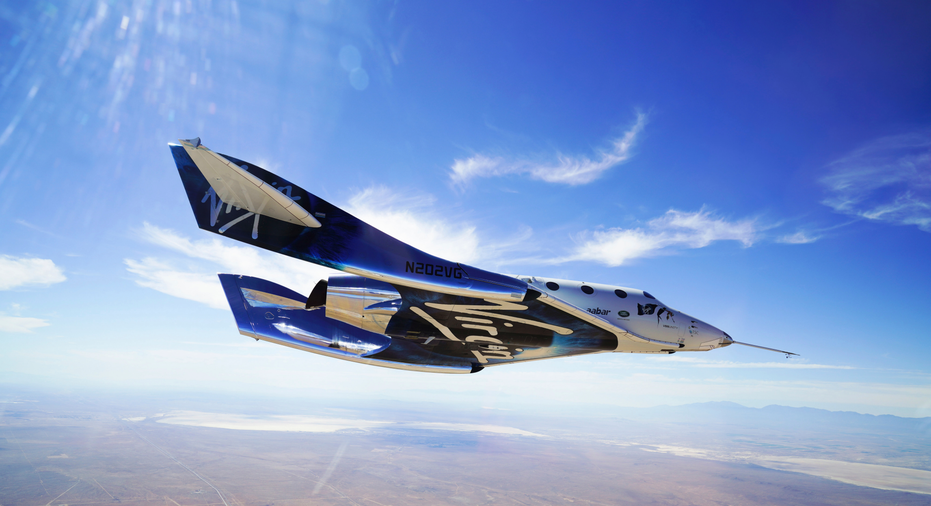The Latest: Tourism rocket ship reaches space on test flight
In this Jan. 11, 2018 photo provided by Virgin Galactic, the VSS Unity is released from the WhiteKnightTwo aircraft during a gliding test for SpaceShipTwo near Mojave, Calif. The spaceship isn’t launched from the ground but is carried beneath the special aircraft to an altitude around 50,000 feet (15,240 meters). There, it’s released before igniting its rocket engine and climbing. (Virgin Galactic via AP)
MOJAVE, Calif. – The Latest on a test flight of Virgin Atlantic's space tourism rocket ship (all times local):
8 a.m.
Virgin Galactic says its tourism spaceship has climbed more than 50 miles high, which the company considers the boundary of space.
Virgin Space Ship Unity was released from a carrier aircraft over California's Mojave Desert early Thursday and ignited its rocket engine.
The spacecraft with two test pilots at the controls quickly hurtled upward and out of sight from viewers on the ground.
Mission official Enrico Palermo says it reached an altitude of 51 miles (82 kilometers) before beginning its gliding descent. It landed minutes later.
The company plans to eventually take paying passengers on short trips to space.
7 a.m.
A jet carrying Virgin Galactic's tourism spaceship has taken off from a California airport on a test flight.
The two pilots will attempt to launch the craft on a supersonic flight to the edge of space for the first time.
The mated jet and rocket ship lifted off from Mojave Air and Space Port shortly after 7 a.m. Thursday.
The jet will climb to an altitude near 43,000 feet and then release Virgin Space Ship Unity.
The pilots hope to fly the rocket ship to an altitude exceeding 50 miles (80 kilometers), which Virgin Galactic considers the boundary of space.
The company plans to eventually take paying passengers on short trips to space.
2:30 a.m.
A rocket ship set to launch from California's Mojave Desert could herald a giant step toward the long-awaited dream of space tourism for Virgin Galactic.
Two test pilots are scheduled to fly Virgin Space Ship Unity more than 50 miles (80 kilometers) into the sky Thursday morning from the company's spaceport in Mojave. They should get several minutes of weightlessness and a view of Earth.
Virgin Galactic considers that altitude to be the threshold of space because it's defined that way by the Air Force and other U.S. agencies, although others have long considered the boundary to be higher.
A successful flight will be significant progress toward the start of commercial flights that Virgin Galactic promised more than a decade ago.
Virgin Galactic's first experimental spacecraft broke apart during a 2014 test flight, killing the co-pilot.





















